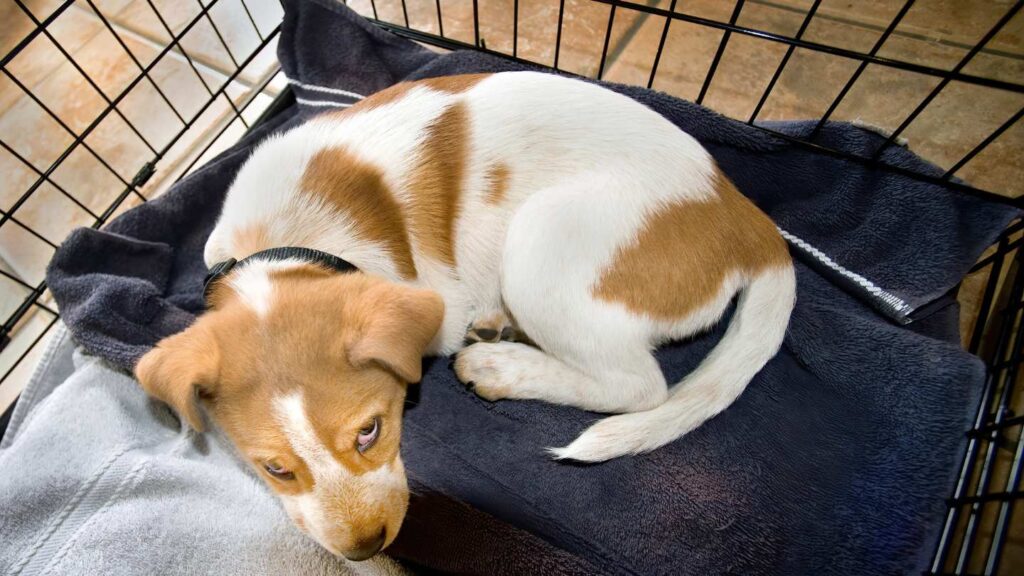
How To Crate Train A Puppy
Introducing your puppy to crate training marks an important step in their development and your journey together as pet and owner. While some may view crates as confinement, when introduced properly, they become safe havens for your furry friend – providing security, comfort, and a sense of belonging. Failure to incorporate crate training into your puppy’s routine can lead to a myriad of challenges, both for you and your furry friend. In this comprehensive guide, we’ll explore the significance of crate training and the potential consequences of neglecting this vital aspect of your puppy’s upbringing.
Crate training offers numerous benefits beyond simply providing a place for your puppy to rest. It serves as a safe haven, offering security and comfort during times of stress or uncertainty. Additionally, crates aid in the housebreaking process by teaching puppies to control their bladder and bowels, ultimately preventing accidents indoors. Moreover, crates provide a means of containment, ensuring your puppy’s safety when you’re unable to supervise them closely.
Failure to incorporate crate training into your puppy’s routine can result in various challenges and behavioral issues. Without a designated space of their own, puppies may feel anxious or insecure, leading to destructive behaviors such as chewing or excessive barking. Additionally, lack of crate training can hinder the housebreaking process, making it difficult for puppies to learn appropriate bathroom habits. Furthermore, without proper containment measures, puppies may engage in unsafe behaviors or encounter potential hazards in the home.
By understanding the importance of crate training and the potential consequences of neglecting this essential aspect of your puppy’s upbringing, you can make informed decisions regarding your training approach. In the following sections, we’ll delve into the fundamentals of crate training, providing you with the knowledge and tools needed to ensure a positive and successful experience for both you and your furry companion.
Choose the Right Crate:
Selecting the perfect crate is essential for successful training. Opt for a crate that’s spacious enough for your puppy to stand, turn around, and lie down comfortably. However, avoid choosing a crate that’s too large, as excess space can encourage accidents. The ideal crate provides a cozy den-like atmosphere, promoting feelings of security and safety.
Create a Positive Association:
Transform the crate into a welcoming retreat by adding soft bedding and your puppy’s favorite toys. By creating a positive association with the crate, you’ll encourage your puppy to view it as a comfortable and secure space. Allow your puppy to explore the crate at their own pace, gradually introducing them to their new environment.
Gradual Introduction:
Ease your puppy into crate time by starting with short intervals and gradually increasing the duration. This gradual introduction helps prevent anxiety and fear associated with confinement. Encourage your puppy to enter the crate voluntarily by offering treats and praise, reinforcing the idea that the crate is a place of safety and relaxation.
Utilize Treats and Positive Reinforcement:
Harness the power of positive reinforcement to encourage crate use. Reward your puppy with treats and praise each time they enter the crate willingly. By associating the crate with positive experiences, such as receiving treats or attention, your puppy will be more inclined to view it as a desirable space.
Incorporate Mealtime in the Crate:
Associate mealtime with the crate to further reinforce positive associations. Place your puppy’s food bowl inside the crate, allowing them to enjoy their meals in their designated space. This practice not only promotes positive feelings towards the crate but also helps establish a routine around mealtime.
Make Crate Training a Game:
Turn crate time into an enjoyable game for your puppy. Toss treats inside the crate and encourage your puppy to explore and retrieve them. This playful approach not only makes crate time fun but also reinforces positive associations with the crate.
Leave and Return Calmly:
Maintain a calm demeanor when leaving or returning to prevent anxiety in your puppy. Keep departures and arrivals low-key, avoiding prolonged goodbyes or overly excited greetings. By establishing a sense of normalcy around crate time, you’ll help alleviate stress and promote a relaxed environment.
Gradually Increase Alone Time:
Extend crate time gradually as your puppy becomes more comfortable with confinement. Start with short periods of alone time and slowly increase the duration. By introducing alone time in increments, you’ll ensure your puppy feels secure and content when left alone in the crate.
Crate training is a valuable tool in fostering a positive and secure environment for your puppy. By following these steps and incorporating patience and consistency, you can transform the crate into your puppy’s favorite spot – a sanctuary they willingly retreat to for rest and relaxation. Need help with Crate Training? Get a completely Free Crate Training Session at Total Dog! here
